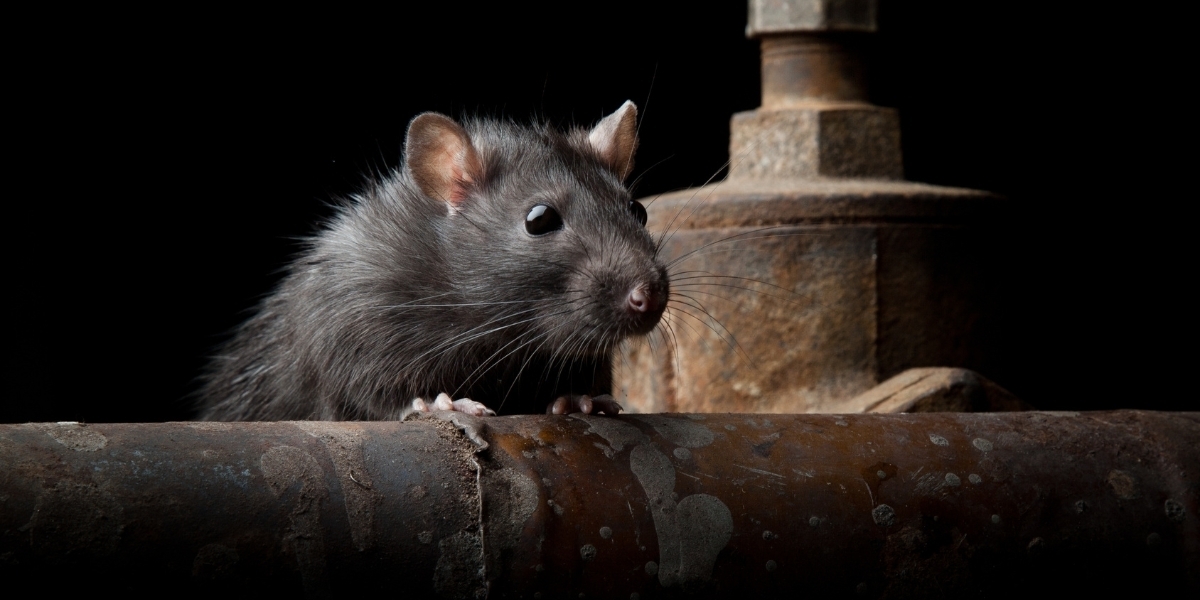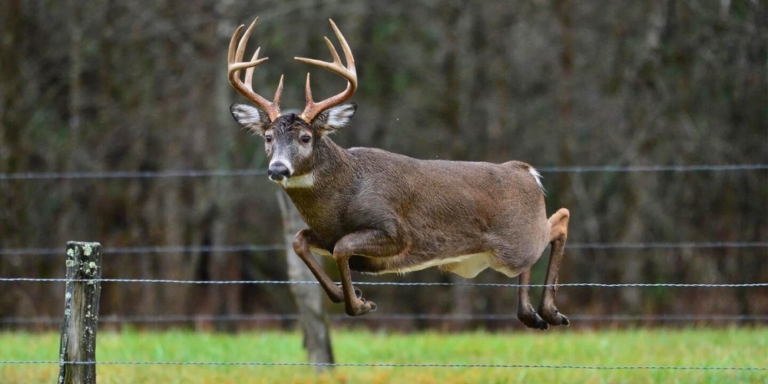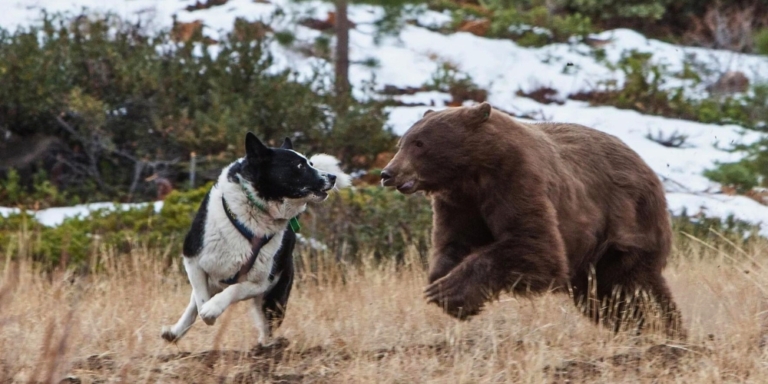Alberta is the only Canadian province considered rat-free. But it didn’t just happen. It took a lot of work.
We have defended our borders for over 70 years against these horrible monsters. Their naked tails are twisted like snakes, and their protruding eyes can pierce your soul. Our adversary is the Rattus norvegicus, which translates to Norway rat.
Strangely, the invasive rat is thought to have originated in northern China, not Norway. Go figure. It’s also known as the common rat, brown rat, sewer rat, and this list goes on. Whatever you call it, the rat has spread to all continents except Antarctica.
As far as appearances go, most people would agree that these furry fellows are pretty ugly.
As the name suggests, brown rats are defined by their brown fur, but they also have sharp noses and good hearing. Above all else, they are pests. In many parts of the world, brown rats are invasive species that threaten wildlife.
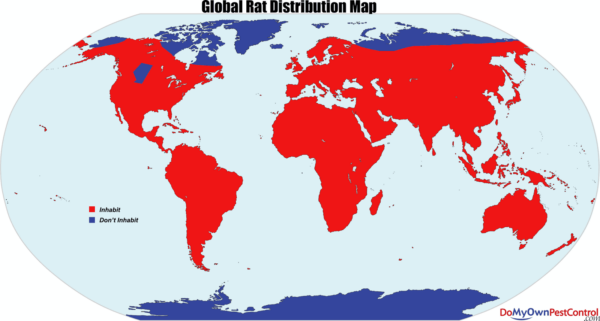
Since they stowed away on ships in the early 1800s, they have become the dominant rat on the North American continent.
The migration continued. It is estimated that between 1925 and 1927, about 50% of ships entering the port of New York were infested with rats.
But these freeloaders can’t live on their own. To survive, they need easy access to food and shelter. They prefer urban areas where they can find their way into homes where they cause damage and spread disease through droppings and urine.
Becoming rat-free requires hard work. For decades Alberta has waged war on all rats, not just brown rats, and won. Aside from Antarctica, Alberta now stands alone as the world’s only rat-free area.
Battle Of The Eastern Front
Let’s address the rat in the room. Alberta’s rat-free status is a tad misleading. Rat-free means there is no resident population of rats in the province because they are not allowed to establish themselves.
More specifically, rats that set a paw in Alberta are isolated and eliminated through the Rat Control Program. This program was established in 1950 after rats were first discovered in Alberta.
The original Ground Zero was a farm in Alsask, Saskatchewan, right on the eastern border of Alberta. Fearing the rats would spread plague throughout the province, the Alberta government added the rodents to its hit list.
This hit list is more commonly known as the Agricultural Pests Act of Alberta, established in 1942. This act allows the Minister of Agriculture to label any animal likely to destroy crops or livestock as a pest.
The act also states that every person and municipality must destroy and prevent outbreaks of pests. Failure to do so allows the Alberta government to step in and get the job done right.

The battle began in the e1950s. In addition to designating them as pests, Alberta’s Rat Control Program involved public education. Many conferences were held in six eastern Alberta towns. The Alberta government also distributed 2,000 posters and 1,500 pamphlets to grain elevators, railway stations, schools, post office staff, and private citizens.
The pamphlets and posters promoted the destruction of rats and advertised ways to prevent rat infestations, such as eliminating food supplies and rat-proofing houses.
However, we were still losing the war against rats. In the Fall of 1951, 30 rat infestations were confirmed along 180 kilometres of Alberta’s eastern border. By 1952, rats were active along 270 kilometres of the border and had pushed as far as 60 kilometres west toward Medicine Hat. Something drastic needed to be done.
Chemical Warfare
With rats rapidly advancing west, the Alberta government hired a private pest control firm to hold the line while the province developed a working strategy.
To keep the rats at bay, arsenic trioxide tracking powder was used. This toxic powder sticks to a rodent’s fur and paws. When rats groom themselves, they ingest this powder and die.
The province also set up a Rat Control Zone (RCZ) along its eastern border. The RCZ is monitored by seven municipalities: Cypress County, County of Vermillion, Special Areas 2, 3, and 4, and the Municipal Districts of Acadia, Provost, Wainwright, and Bonnyville.
From June 1952 to July 1953, more than 63,000 kilograms of tracking powder were used to treat 8,000 buildings on 2,700 farms. The powder was blown underneath all permanent structures and some temporary facilities in the RCZ. While the program was eventually discontinued, it succeeded in pushing the rats back to within 20 kilometres of the border.
The program also bought the Alberta government the time it needed to upgrade the Rat Control Program into what it is today.
Turning The Tides
Under the improved Rat Control Program, pest control officers (PCOs) were appointed in every municipality. However, most of the heavy lifting was done by the seven municipalities in the RCZ.
With this in mind, these municipalities argued that they were spending money out of their pockets to protect the entire province from rats. Because of this, the Alberta government agreed to pay 50% of the salary and expenses for full-time PCOs in each municipality located in the RCZ.
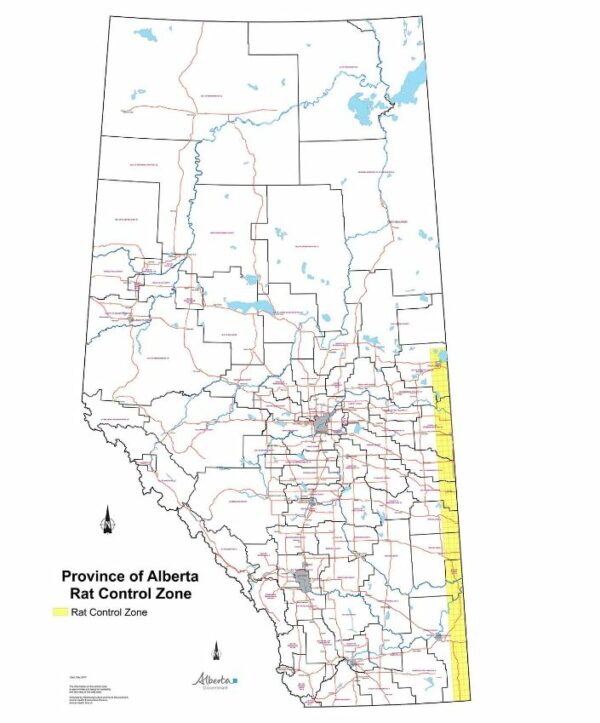
These PCOs performed the following tasks:
- checked every premise within 29 kilometres west of the border
- distributed bait and established bait stations
- encouraged rat-proofing of buildings and the removal of rat harborage and food
- destroyed any rat infestations that were found
We also have Mother Nature to thank! Our prairies in the south, Rockies in the west, and boreal forest in the north, naturally protect us from rats, which thrive in highly populated areas.
As a result, rats trying to enter the province from the east are forced to move through the sparsely populated Cypress Hills in the south or the boreal forest in the north.
However, the war was far from over. There were 573 rat infestations in 1955 and 637 rat infestations in 1959. To turn the tide, the province needed the public on its side.
Power To The People
While the public education program continued through the 1950s, some obstacles existed.
Most people supported rat control, but not everyone. One mayor refused to cooperate because he thought the program was a red herring from the ruling political party at the time. Another mayor denied that rats could threaten his town and even promised to eat any rats found there. When a slaughterhouse presented the mayor with local rats, he chose to eat his words instead.
Indigenous reservations and Metis colonies in north-central Alberta were also challenging to convince. At the time, Indigenous peoples were only familiar with the deadly poison strychnine and assumed all poisons were just as lethal. As a result, the Indigenous peoples removed or destroyed baits to protect their pets, children, and livestock.
One PCO held a series of meetings with the Indigenous population to prove the safety of warfarin, the poison widely used for rat control. During these meetings, the PCO would casually chew on rolled oats treated with warfarin while discussing rat control and the properties of warfarin. The Indigenous peoples expected the PCO to die on the spot, but his survival convinced them warfarin was safe.
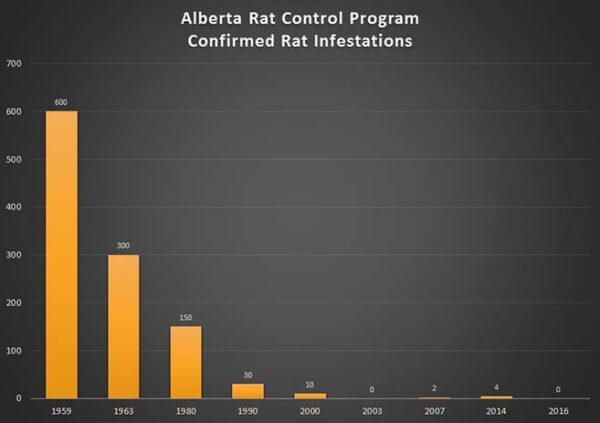
After almost ten years after the Rat Control Program was established, the number of rat infestations began rapidly dropping. Public education, training, and experience eventually brought the rats to their scraggly little knees.
After a long and tiresome war, Alberta emerged victorious. Now, there is as little as one rat infestation per year.
To remain rat-free, importing, selling, or keeping rats as pets in Alberta is illegal. The only rats allowed in Alberta are kept by zoos, colleges, universities, and recognized research institutions.
For our beautiful province to continue as the only rat-free jurisdiction north of Antarctica, we must work together and always remain on guard. It will continue to take work, but Albertans aren’t afraid of hard work, especially if it helps us win the rat race.

